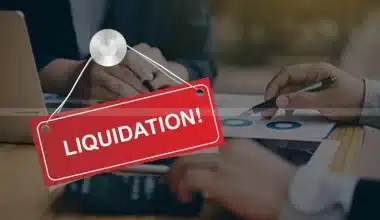These days, most people use electronic means, such as email, texting, and social media, to have conversations with one another. Taking the time to put pen to paper and ensure that your business letter follows standard style may seem archaic, but it is more important than ever for entrepreneurs. A well-written business letter can help you convey your point, whether you’re encouraging someone to read a report, introducing yourself to a possible customer, or showing gratitude. Written letters are still essential to any small business owner’s communication strategy. In this piece, we will show you the format of how to write a business letter.
What Is a Business Letter?
A business letter is a formal letter written in a professional tone and sent from one company to another. These letters can be used to communicate professionally with clients, employees, stakeholders, and other people. Individuals may also use them.
A well-written business letter can stand out, whether you are trying to inform a potential client about your product, partner with another firm, urge someone to attend your event, or deliver a thank-you message. However, writing a business letter is an indication of professionalism and sophistication; yet, it can be a laborious effort if you are not familiar with the notion being communicated in the letter.
In fact, the very idea of business letters may strike you as old-fashioned and foreign.
You might find yourself wondering if anyone still uses elegant letterhead and a plain white envelope. Perhaps it’s just a thing of the past, what with email and texting.
Furthermore, there’s no denying that traditional letter writing still serves an important purpose in the business world today. On average, an office worker gets 100 emails every day, according to research.
This indicates that sending a letter to someone’s mailbox rather than their email inbox increases the likelihood that their letter will be read. A well-written business letter can help you stand out from the crowd whether you’re trying to inform a potential client about your product, partner with another firm, urge someone to attend your event, or simply express gratitude.
What Are the Types of Business Letters?
Business correspondence, or “business letters,” is commonplace. They facilitate the organization’s ability to have its interactions with outside parties both understood and documented. Typically, corporations send letters to other corporations. However, it can also be delivered to a customer or supplier. A company’s day is filled with writing a business letter in a wide variety of styles.
A business letter usually follows a standard format so that it is clear and easy to read. You must know and follow this framework if you want to communicate well and keep a professional appearance. The reputation of a corporation is represented in every kind of communication it sends. That’s why you need to make sure your business letters are properly prepared. Here are the types of business letters:
#1. Sales Letters
It’s safe to say that sales letters are the most typical business letter style. The point of these letters is to tell the person about your business and encourage them to do something.
Because of this, the opening line of a sales letter is so crucial for making an impact. You can make a strong assertion or refer to relevant statistics. Most of the time, a sales letter would introduce a product or service to people who had never used it before. Therefore, following the correct format for a business letter is crucial.
Factors to consider while composing a sales letter:
- Create a captivating first paragraph.
- Put in a compelling call-to-action that explains what you hope the customer will do.
- Maintain brevity and clarity.
#2. Recommendation letters
A letter of recommendation is written by a professional about another professional to confirm their skills and work ethic. This letter is also known as a reference letter. A letter of reference could help someone get a job, get into college, or be considered for another professional opportunity.
The following are components of a strong recommendation letter:
- Relevance of the suggestion: In order to establish the writer’s credibility, recommendation letters should detail the author’s connection to the applicant. Letters of recommendation are typically penned by someone who knows the candidate well, such as a coworker, supervisor, mentor, or instructor.
- Examination of the Applicant’s Skills: Typically, the recommendation itself takes up most of the letter and provides specific details on the candidate’s qualifications, personal qualities, career aspirations, and suitability for the post at hand. As such, it is important that the professional’s qualifications shown here are directly applicable to the position or course of study recommended.
- Examples: The author should give concrete instances of the candidate’s shown competence during their time working together. Insight into the candidate’s good influence on their colleagues and previous employers can be gained from this data.
- Summary and Conclusion: The closing paragraph of a recommendation letter should restate the candidate’s qualifications and provide the reader with the writer’s contact information.
#3. Complaint Letters
A business letter of this type expresses discontent with a service or good, as the name suggests. It’s easy to let your emotions get the best of you while talking about a poor service or product. A complaint letter should be written professionally and clearly. You want your letter to stand out and make it easy for the recipient to respond positively, so be sure to do this.
Additionally, the recipient will be more inclined to assist you if you show empathy for them in your letter.
Tips for creating an effective complaint letter:
- Focus on the end result as you write the letter.
- Talk firmly but politely.
- Pay attention to what you’re selling. Don’t use the letter as a platform for attacking the writer.
- Being sympathetic to the other person may help your concern get resolved more quickly.
#4. Resignation Letters
If you want to leave your current job, it’s polite to give your employer notice in writing. Some companies will accept a verbal resignation notice, but most will want you to write and send a business letter as proof that you have left your job.
The following are common items to mention in a resignation letter:
- Explanation of Reasons for Leaving Employment: State your resignation from the company formally in the first paragraph of this letter.
- Reason for leaving: Depending on the circumstances, you might want to let your employer know why you’re leaving. Taking a new job, going back to school, or moving somewhere else are all examples.
- Dates: Clearly state your end day of employment and the date the letter is being delivered. Your company will be able to better plan for your departure and find a replacement if you take this action.
- Gratitude: One option is to express gratitude to one’s former employer for the experience and knowledge obtained on the job. This is an act of professionalism that can help you in the future when you may require a referral from your employer.
#5. Apology Letter
Humans are responsible for running businesses, and humans are fallible. It’s vital for the company’s future success that this error be recognized and rectified. Make the first move in your letter by saying, “I was wrong.” Then, apologize sincerely and explain what your business will do to prevent future errors. As the letter concludes, repeat your request for forgiveness.
When crafting your letter of apology, keep the following in mind:
- Admit your shortcomings.
- Besides sending a letter of apology, you should consider making amends in person.
- The letter should contain a sincere expression of regret.
- Specify the changes or alterations that will be implemented.
#6. Termination letters
A termination letter is an appropriate and efficient means of terminating an employee’s employment. “Termination letter” is an umbrella term for letters like separation letters, notices of termination of employment, and letters that end contracts.
When writing a letter of termination, be sure to cover the following:
- Notification of termination date: At this point, you should provide the employee with notice of termination and the effective termination date. This avoids any misunderstandings and gives the worker time to get ready for termination.
- Termination Reasons: Avoid any misunderstanding by keeping your justification for the employee’s involuntary termination crystal clear and truthful. Provide examples to back up your claims when possible.
- Compensation and future benefits: Next, outline any severance pay or other perks they will get upon leaving their position. This can include salary, vacation compensation, or other benefits that are due but not received. Inform them of what will happen to their health care, life insurance, and retirement accounts as well. Remind them of any agreements they signed during the onboarding process, such as a non-disclosure agreement or other paperwork that could affect their remuneration and benefits payout.
- Next steps: In conclusion, please detail the employee’s next steps. Notify the employee of any corporate property, such as a cell phone, laptop, keys, ID badges, and parking passes, that they are required to return. Then, make sure they know how to get in touch with their Human Resources rep if they have any further concerns about their pay, benefits, or the letter itself.
Format of a Business Letter
There is a wide variety of business correspondence you may encounter in the course of your work. Cover letters, recommendation letters, and everything in between can all benefit from a well-written business letter. If you want to be more persuasive in your writing, learning about the structure and format of a business letter will help. The following is a business letter format.
#1. Your Contact Information
Standard business letter format includes the sender’s address at the top. If you are not using letterhead, your address should be written on the first line of your letter, above the date. If you want the letter to be properly closed, the sender’s name and title will already be at the conclusion. Only the street number, city, and zip code are required. Here is an example of how to present your contact details:
#2. The Date
The date the letter was written is included in the date line. If your letter requires multiple days to write, however, include the date it was finally completed in the date line. Employ the American date format when communicating with American businesses. (The month comes first in the United States when writing out a date. The eleventh of June, 2001, for instance.)
Furthermore, two inches down from the page’s top, jot down the date. Left-justify the date or tab to the center of the page and type it, depending on the letter format you’re using. The latter requires the sender’s address to be right-justified on the letterhead.
#3. The address and phone number of the recipient
You should put a blank space after the date on a business letter. The addressee’s details should be entered on a new line. Use this sample format for presenting their data:
For the attention of [first name], [last name], [accreditation(s) or degree(s)],
You can reach me at [phone number], [email address], [city], [state], and [postal code].
#4. Opening Salutation
Include the same full name and title as the internal address. Use only the first name if you are familiar with the recipient and would normally refer to them by that name (for example, “Dear Mary”). In all other cases, use a personal title and last/family name separated by a colon. After the greeting, skip a line.
If you don’t know the person’s gender, use a neutral greeting, like their job title and then their name. If you can’t tell what gender the person is, you can also use their full name as a greeting.
#5. The Body
If you are using the block or modified block format, single-space the whole letter and align the paragraphs to the left. You should put a blank line between each paragraph. Be mindful of the need for brevity while drafting a business letter. Think about starting with a warm greeting and then stating your primary point directly in the first paragraph. The next paragraph should start making a case for why the main argument is so crucial. Continue justification in the following paragraphs by providing context and evidence. In the last paragraph, you should restate the purpose of the letter and, in some cases, ask for something.
#6. Closing salutation
After the letter’s main body, it’s common to leave a blank paragraph and then choose a good closing greeting. Some typical salutations to use when ending a business letter are:
- Cordially
- Sincerely
- Respectfully yours
- Respectfully
- Thank you
- Yours sincerely.
#7. Enclosures
Include a line reading “Enclosures” below your signature line to let the recipient know that there are further materials, like a résumé, attached to the letter. One alternative is to indicate the contents of the envelope by naming each individual piece of paper. For instance, if you’ve sent a large number of papers and want to make sure the receiver reads them all, you might want to provide a list of their names. Also, read LETTER OF SUPPORT: How To Write A Letter Of Support.
What Are the Parts of a Business Letter?
Though many different types of letters have formatting requirements and feature different content, most business letters share some common elements. Here are parts of a business letter.
- Contact Information
- Subject Line
- Salutation/ Greetings
- Introduction
- Detailed Information
- Conclusion
- Signature.
How to Write a Business Letter
However, letters are still a vital means of communication in the business sector. Writing an impressive cover letter can help you get hired. And you’ll need an enticing proposal to get someone to speak at your company’s event.
Professionals often don’t understand how important well-written business letters are because they think this kind of communication is old-fashioned. Because of this, the majority of individuals can’t even create a simple one. Here are tips on how to write a business letter:
- Include the date and the name, company, and address of the recipient.
- The use of “Dear,” or another formal greeting shows that you’re taking yourself and your work seriously.
- Create a captivating preface.
- Explain why you’re writing in the letter’s main body.
- Your message should conclude with a clear request for some sort of action.
- Use a formal finish, such as “Sincerely,” to show professionalism.
- Please put your signature on the letter physically.
- Fill in your contact information, including your name, postal address, phone number, and email address.
What Is the Primary Purpose of a Business Letter?
Business letters are typically used to convey information, give directions, ask questions, make requests, return payments, issue orders, give advice, make corrections, or pose new questions. To summarize, a business letter serves primarily to: The primary objective of any formal business letter is to provide information related to the company’s operations.
Conclusion
Here in this article, you will learn the ins and outs of crafting a professional business letter. Once you learn the many kinds of business letters and the different formats for writing them, you’ll be able to whip up a professional letter whenever the occasion calls for it. Writing professional letters is a breeze if you learn the standard format of a business letter.
Now you know when it’s necessary to compose several types of business letters. In this case, you can put your penmanship to good use.
Business Letter FAQs
What are the purpose of a business letter?
- Complete a Deal
- Creation of Demand
- Expansion of Business
- Establishment of Relationship
- Solve Problems
Which characteristics define a business letter?
- The duration of this is negligible.
- Right to the point. It makes its points crystal obvious and encourages further action from the reader.
- It shows courtesy.
- The tone is rather serious throughout the piece.
- It is error-free.
So, why do we need business letters, and what do they do?
There is a wide variety of purposes for writing a business letter, including requesting information or taking action from the recipient, placing an order with a vendor, correcting the recipient’s misunderstanding, providing an immediate response, expressing regret for an offense, or expressing goodwill.
Similar Posts
- TO WHOM IT MAY CONCERN: All You Should Know!!!
- LETTER OF TERMINATION: Definition, How to Write One and Samples
- How to Build an Email Marketing List From Scratch in 10 Steps
- SMALL BUSINESS LOAN: How to Get a Small Business Loan
- HOW TO WRITE AN APPEAL LETTER: Steps, Examples, And Templates






